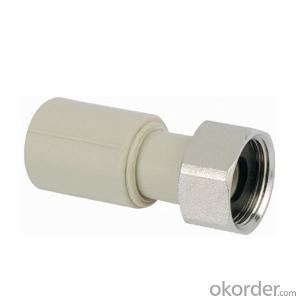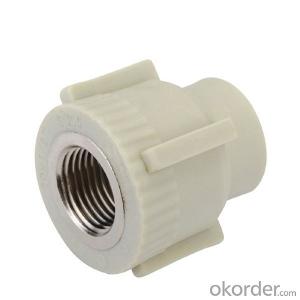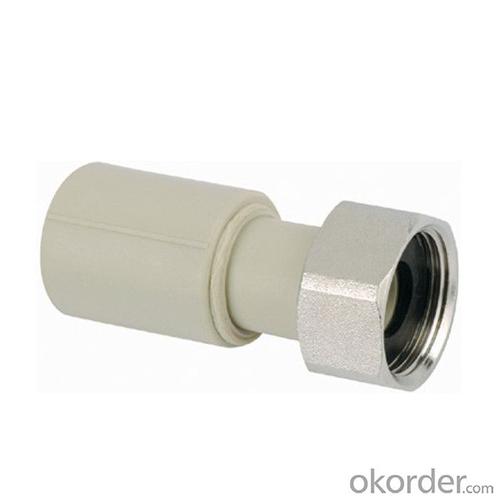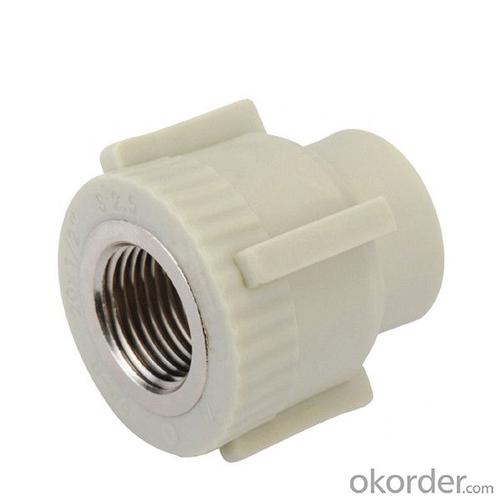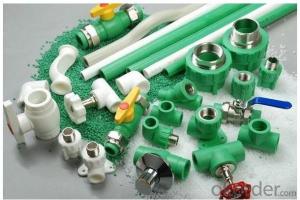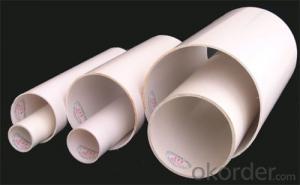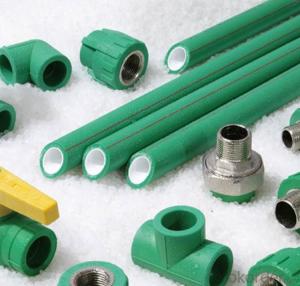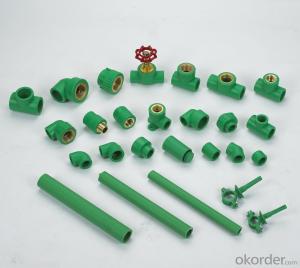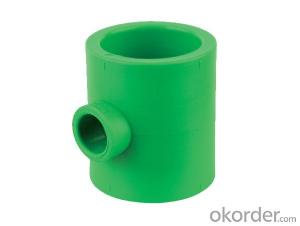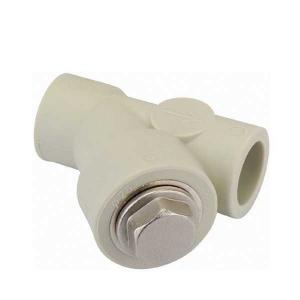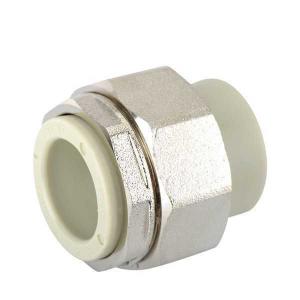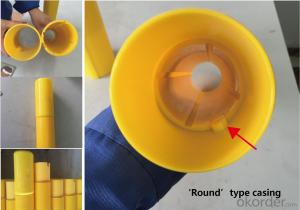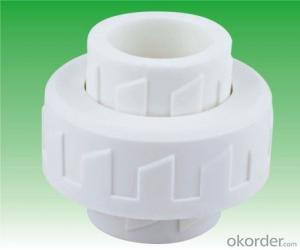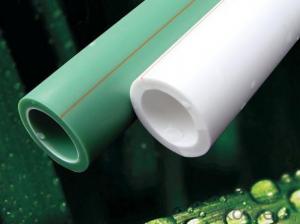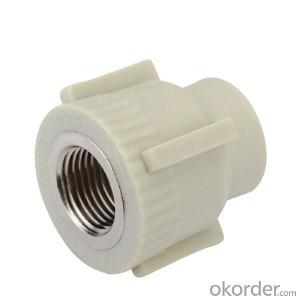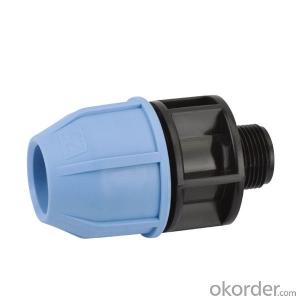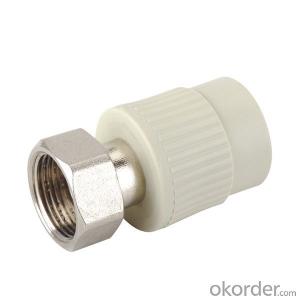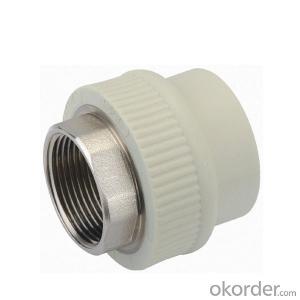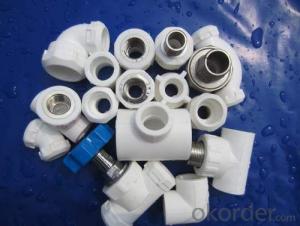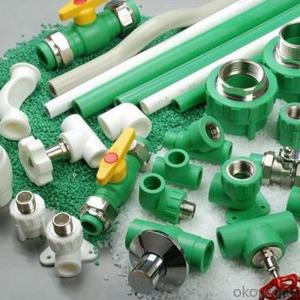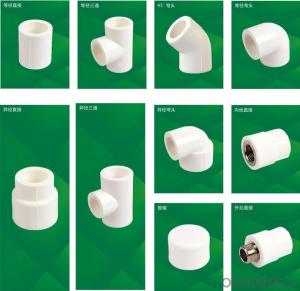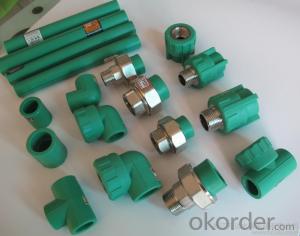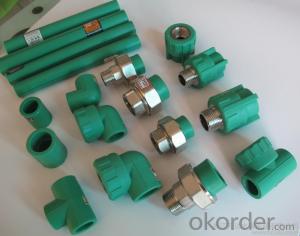Small Plastic Pipe Fittings - PPR Couplings for Industrial and Agricultural Fields from China Professional
- Loading Port:
- Tianjin
- Payment Terms:
- TT OR LC
- Min Order Qty:
- 1000 pc
- Supply Capability:
- 1000000 pc/month
OKorder Service Pledge
OKorder Financial Service
You Might Also Like
Product Overview:
1.It is used in industrial fields, agriculture and irrigation.
2.Beauty appearance.
3.Thermal insulation and energy saving.
4.Easy installation
5.excellent heat resistance and pressure resistance
6.affordable price
Product Application
1.Potable water for cold and warm water installations
2.For rainwater utilization systems
3.For compressed air plants
4.For swimming pool facilities
5.For solar plants
6.For agriculture and horticulture
7.Heating pipes for residential housing
8.For industry.
Our Services
1. OEM Manufacturing welcome: Product, Package...
2. Sample order
3. We will reply you for your inquiry in 24 hours.
4. after sending, we will track the products for you once every two days, until you get the products. When you got the
goods, test them, and give me a feedback.If you have any questions about the problem, contact with us, we will offer
the solve way for you.
Product Description
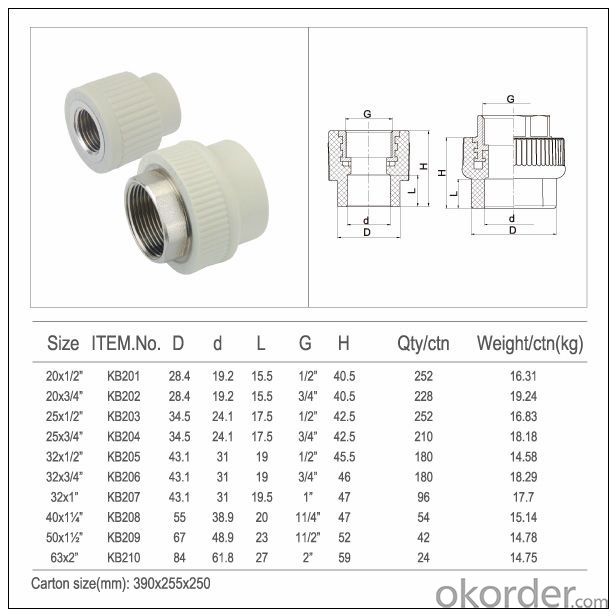
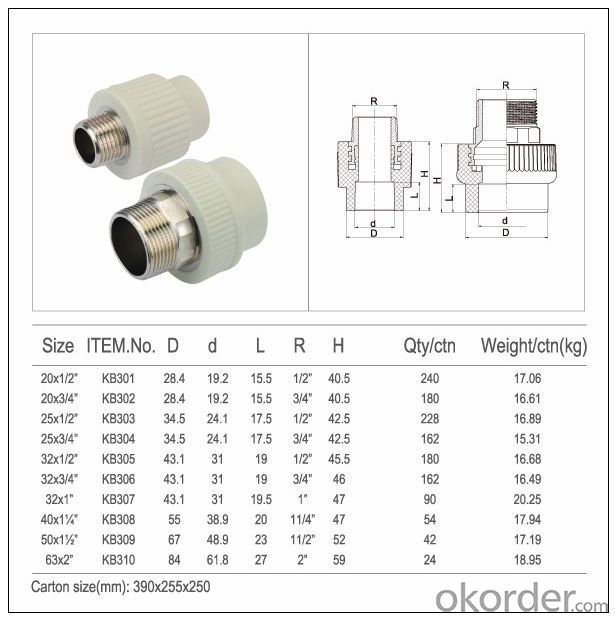
Product Show
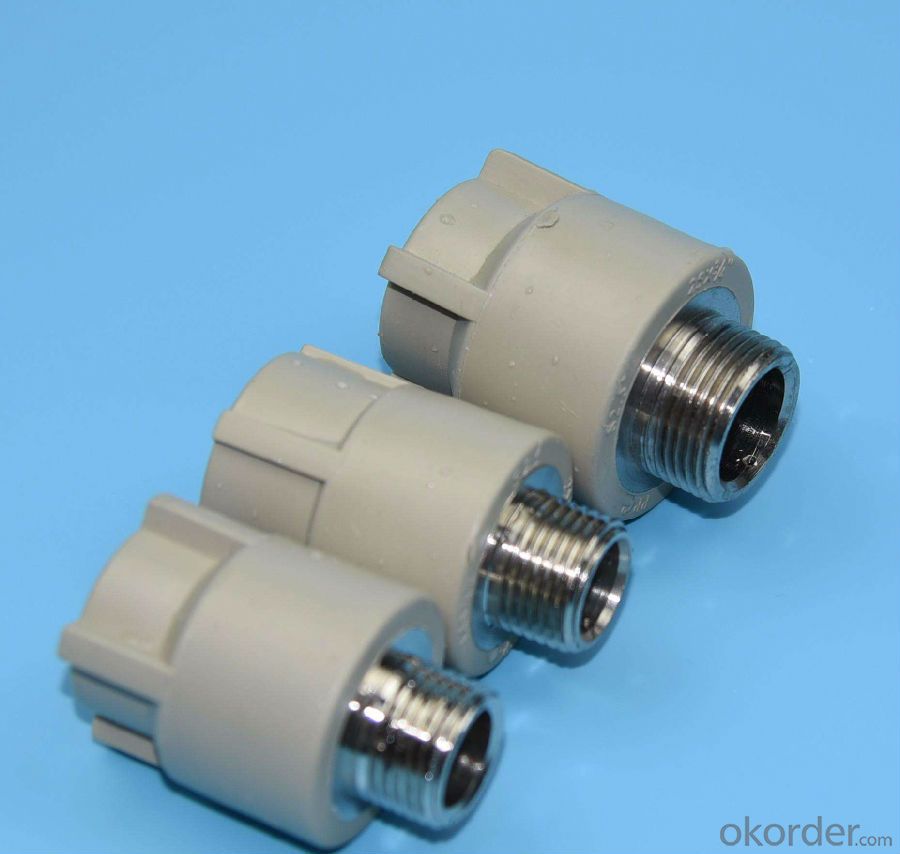
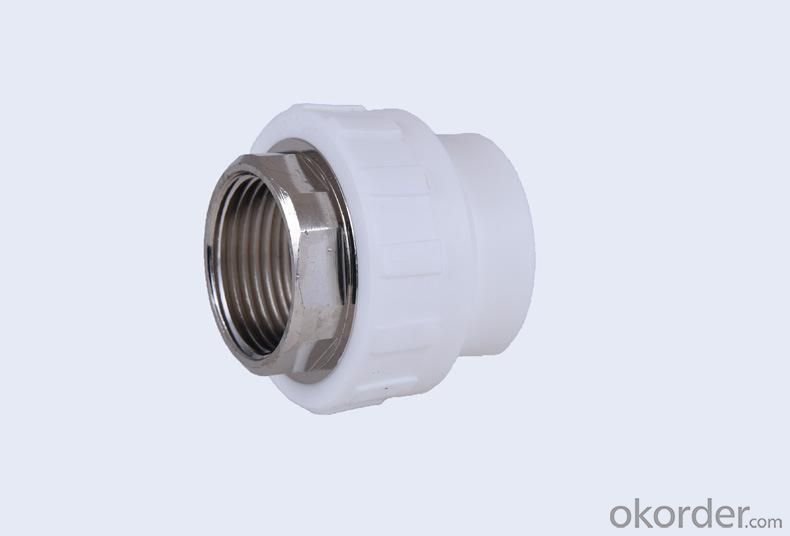
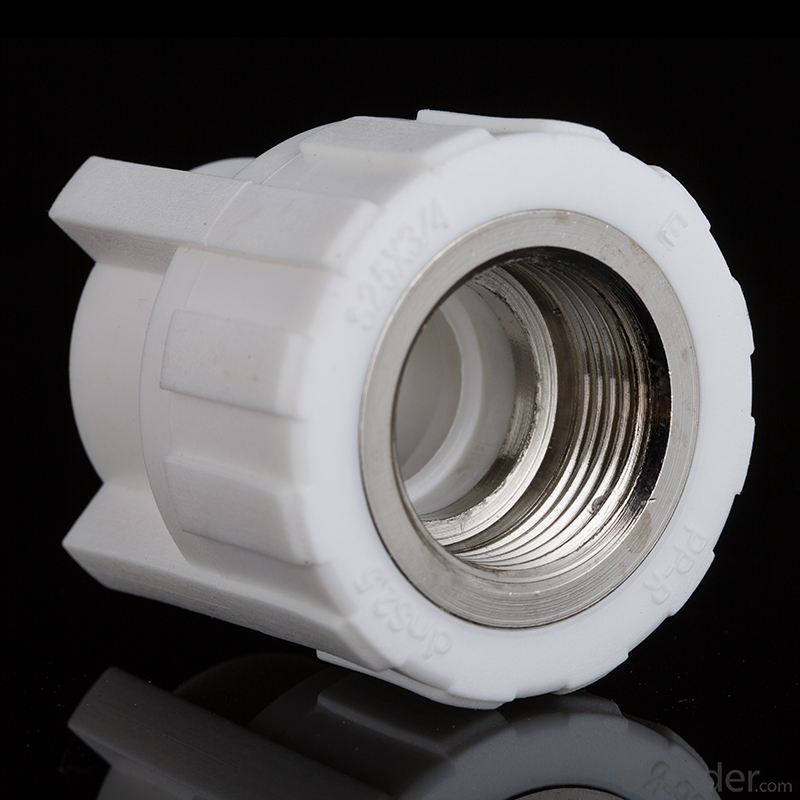
FAQ
Q: How do you guarantee the quality of your product?
A: Every process will be checked by responsible QC which insures every product's quality.
Q: How much is your delivery time?
A: Normally within 30 days of receipt of LC original or prepayment, but mostly according to the specific requirements or the quantity
Q: I need sample, could you support?
A: We can supply you with the sample for free, but the delivery charges will be covered by our customers. For avoiding the misunderstanding, it is appreciated if you can provide the International Express Account for Freight Collect. Also you can have a visit to us, welcome to CNBM!
- Q: Are plastic pipe fittings resistant to gasoline and oil?
- Yes, plastic pipe fittings are generally resistant to gasoline and oil.
- Q: What are the common sizes of plastic pipe fittings?
- The common sizes of plastic pipe fittings vary depending on the specific application and industry. However, some commonly used sizes include 1/2 inch, 3/4 inch, 1 inch, 1 1/4 inch, 1 1/2 inch, and 2 inches. These sizes are widely available and used in plumbing, irrigation, and other piping systems.
- Q: Are plastic pipe fittings suitable for use in breweries and distilleries?
- Yes, plastic pipe fittings are suitable for use in breweries and distilleries. They are commonly used in these industries due to their excellent resistance to chemicals, corrosion, and temperature variations. Additionally, plastic pipe fittings are lightweight, easy to install, and cost-effective, making them a popular choice for various applications in breweries and distilleries.
- Q: How do you remove a plastic pipe fitting?
- To remove a plastic pipe fitting, you typically need to follow these steps: 1. Turn off the water supply: Locate the main water valve and shut it off to prevent any leaks or water flow while removing the fitting. 2. Drain the pipe: Open a faucet or valve downstream from the fitting to drain any water remaining in the pipe. 3. Cut the pipe: Using a pipe cutter or hacksaw, carefully cut the plastic pipe on both sides of the fitting. Be cautious not to damage the adjacent pipe or the fitting itself. 4. Loosen the fittings: Depending on the type of fitting, you may need to use a wrench or pliers to loosen and remove any nuts, clamps, or rings securing the fitting to the pipe. 5. Separate the fitting: Once the nuts/clamps are loose, gently twist and pull the fitting away from the pipe. If it's stubborn, applying heat with a heat gun can help soften the plastic and make it easier to remove. 6. Clean the pipe ends: After removing the fitting, use a utility knife or sandpaper to clean any burrs or debris from the pipe ends before installing a new fitting or reconnecting the existing one.
- Q: Can plastic pipe fittings be used for biofuel production facilities?
- Yes, plastic pipe fittings can be used for biofuel production facilities. Plastic pipes are commonly used in various industries, including biofuel production, due to their durability, corrosion resistance, and cost-effectiveness. They provide a reliable and efficient solution for transporting fluids and can withstand the harsh chemical environments often found in biofuel production processes.
- Q: Are plastic pipe fittings resistant to thermal contraction?
- Yes, plastic pipe fittings are typically resistant to thermal contraction.
- Q: How do plastic pipe fittings compare to polypropylene fittings?
- Plastic pipe fittings and polypropylene fittings are both types of plastic fittings commonly used in plumbing systems. However, there are some differences worth noting. Plastic pipe fittings are a broad category that includes fittings made from various types of plastic materials, such as PVC, CPVC, and ABS. On the other hand, polypropylene fittings are specifically made from polypropylene, a thermoplastic polymer known for its high chemical resistance and durability. In terms of performance, polypropylene fittings generally offer superior chemical resistance, making them more suitable for applications involving corrosive or aggressive fluids. They are also known for their high temperature resistance and mechanical strength. Plastic pipe fittings, on the other hand, can vary in terms of quality and performance depending on the specific material they are made from. Another important aspect to consider is the ease of installation. Both plastic pipe fittings and polypropylene fittings are typically designed for solvent welding or using mechanical connections. However, polypropylene fittings often have a more precise and secure fit due to their tighter tolerances, which can simplify the installation process and reduce the risk of leaks. Ultimately, the choice between plastic pipe fittings and polypropylene fittings depends on the specific application requirements, such as the type of fluid being transported, the temperature and pressure conditions, and the chemical compatibility needed. It is important to consult with professionals or follow the manufacturer's recommendations to ensure the right choice for each individual case.
- Q: Can plastic pipe fittings be used for water treatment plants?
- Yes, plastic pipe fittings can be used for water treatment plants. Plastic pipe fittings are commonly used in water treatment plants due to their durability, corrosion resistance, and ease of installation. They are often made from materials such as PVC, CPVC, or HDPE, which are approved for use in water treatment applications. Plastic fittings are suitable for various processes within water treatment plants, including conveying water, chemicals, and wastewater. Additionally, plastic fittings are cost-effective and have a long service life, making them a practical choice for water treatment plants.
- Q: Are plastic pipe fittings resistant to scale build-up?
- Yes, plastic pipe fittings are generally resistant to scale build-up. Unlike metal fittings, plastic fittings do not corrode or develop scale deposits over time, making them a reliable choice for plumbing systems.
- Q: Can plastic pipe fittings be used for gas distribution networks?
- Yes, plastic pipe fittings can be used for gas distribution networks. However, it is important to ensure that the selected fittings are specifically designed and approved for gas applications. These fittings need to meet the necessary industry standards and regulations to ensure safety and reliability in gas distribution systems.
Send your message to us
Small Plastic Pipe Fittings - PPR Couplings for Industrial and Agricultural Fields from China Professional
- Loading Port:
- Tianjin
- Payment Terms:
- TT OR LC
- Min Order Qty:
- 1000 pc
- Supply Capability:
- 1000000 pc/month
OKorder Service Pledge
OKorder Financial Service
Similar products
Hot products
Hot Searches
Related keywords
